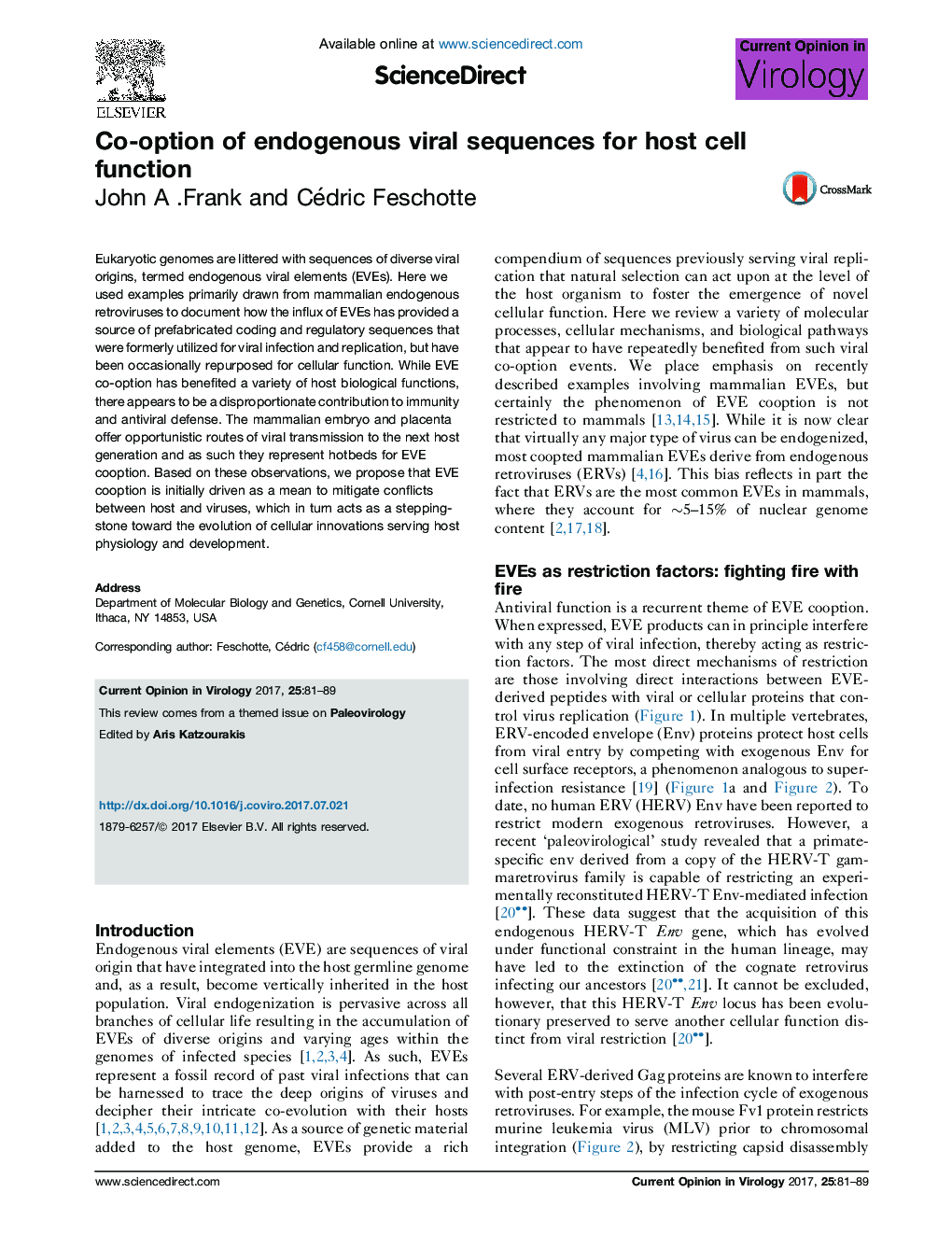| Article ID | Journal | Published Year | Pages | File Type |
|---|---|---|---|---|
| 5546200 | Current Opinion in Virology | 2017 | 9 Pages |
Abstract
Eukaryotic genomes are littered with sequences of diverse viral origins, termed endogenous viral elements (EVEs). Here we used examples primarily drawn from mammalian endogenous retroviruses to document how the influx of EVEs has provided a source of prefabricated coding and regulatory sequences that were formerly utilized for viral infection and replication, but have been occasionally repurposed for cellular function. While EVE co-option has benefited a variety of host biological functions, there appears to be a disproportionate contribution to immunity and antiviral defense. The mammalian embryo and placenta offer opportunistic routes of viral transmission to the next host generation and as such they represent hotbeds for EVE cooption. Based on these observations, we propose that EVE cooption is initially driven as a mean to mitigate conflicts between host and viruses, which in turn acts as a stepping-stone toward the evolution of cellular innovations serving host physiology and development.
Related Topics
Life Sciences
Immunology and Microbiology
Virology
Authors
John A .Frank, Cédric Feschotte,
